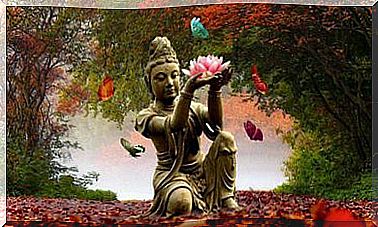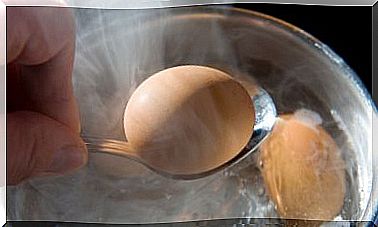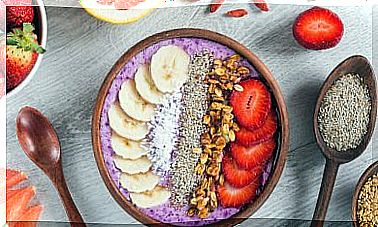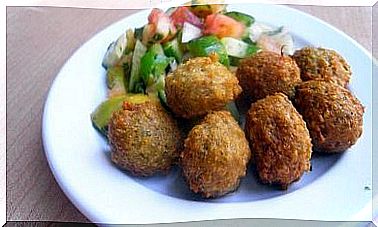9 Ways To Prepare Coffee And Their Characteristics
In case anyone still doubts the prominence of this drink, the data is clear: around the world consume around 2.25 billion cups of coffee per day. This number has been increasing since it became popular in the 1960s. There are so many varieties and ways of preparing coffee that it is easy to find one that suits our tastes and preferences.
Apart from increasing in quantity, quality also evolves and in recent years the focus has been on issues such as sustainability, the characteristics of the preparation or direct trade. More exclusive products appear and we seek to know the history behind them.
Main varieties of coffee
The complexity and cult surrounding this drink is reflected in its varieties and ways of preparing coffee. The main raw material is the seed obtained from the tree called the coffee tree . This small shrub is native to Asia and Africa.
Today many types of coffee beans are known; some of very residual and local consumption. Broadly speaking, it is possible to differentiate between the Arabica and Robusta varieties. In addition to a third class that arises from the mixture of both. These are the main differences between the two.
Arabica coffee
This is one of the most widespread in the world, covering around 80% of world production. It comes from southern Ethiopia, but today the most extensive crops are found in Central America, South America and Asia. Its grains are large and light in color.
It has a caffeine concentration between 1% and 1.5%, lower than the robust variety, but not negligible. The drink that is obtained with them has an acid touch and a flavor that is reminiscent of dried fruits. Within the arabica, some types stand out such as Java, Kenya, moka, bluemountain or peaberry.

Robusta coffee
The shrub that produces this type of grain is very resistant and is grown in varied soils and conditions. The grain is smaller in size, but its caffeine concentration is a bit higher and is around 2% to 2.5%. It is often used to make mixtures or blends.
These beans with their special characteristics translate into a drink with a strong and bitter taste, a bit scratchy and with a less perfumed aroma. That is why it is usually used more in espresso-type preparations.
9 most popular ways to prepare coffee
This highly appreciated drink is obtained from ground coffee beans or seeds diluted in hot water. This is how all its flavors and aromas are extracted. Depending on the conditions in which the plant has grown, different characteristics appear. Or according to the way they are prepared.
1. Express
Also known as coffee alone, it is one of the simplest ways to prepare coffee, but also one of the most classic. The beginning of its commercialization dates back to 1906, when the machine to prepare it was presented. It is the basis for many subsequent elaborations.
It is a direct infusion of hot water with the coffee bean and the result is a short drink of around 30 centiliters. It has a strong flavor and gives off an intense aroma. Black in color, it usually has a layer of golden foam on the surface.
2. Ristretto
This is a more concentrated variant of black coffee. It is made with the same amount of ground grain, but with half the water. As a result, the result is a thicker drink, darker in color, less bitter and with a lower amount of caffeine.
3. American coffee
If ristretto is a concentrated version of black coffee, the americano is longer and is obtained by mixing hot water with an espresso. The result is a less bitter taste, but also less powerful. It is widely consumed in the United States and Mexico and is one of the best-selling beverages in the world as a source of energy in the morning.
4. Cut and macchiato
Along with espresso it is one of the most popular types of coffee drinks. Its base is a single coffee to which a minimum amount of milk (cut) or milk foam ( macchiato ) is added. This reduces the acidity of the espresso.
5. Coffee with milk
This is another of the preparations that arises from the combination of coffee and milk. They are presented in a proportion of 1/3 and 2/3 respectively and for this reason their flavor is sweeter and not so intense. However, the amount of caffeine is still high.
6. Cappuccino
The cappuccino is also a classic in many bar bars or specialty cafes. As a curiosity, it is believed that the name appears due to the similarity of its color with that of the habit of the Capuchin monks.
The proportion is 1/3 of coffee, 1/3 of milk and 1/3 of milk foam. It is usually also added a little cocoa powder or grated chocolate on top to give a touch of different flavor and a little sweeter.
7. Viennese coffee
It is known by the name of cappuccino alla viennese , although in Vienna it is called mélange . At the base is a long and clear espresso to which is added a part of hot milk whipped with cream and cocoa powder.
8. Moccachino
Here the chocolate appears as the protagonist of the preparation. In its formula, coffee, milk and chocolate are present in equal parts, although there are many ways to make it. The result is a sweeter and lighter preparation, even than cappuccino, of which it is considered a variant.
9. Frappe coffee
Of Greek origin, it is a very typical drink in this country. It is prepared with instant soluble coffee shaken with water, sugar and ice. The result is sweet, creamy and fresh and ideal to consume during hot summer nights.

The ways of making coffee reveal the culture
There is no doubt that we are in front of one of the morning drinks par excellence. Along with tea it has passionate consumers and advocates who can enjoy any of its many varieties and preparations.
Coffee is a healthy option as long as it is consumed in moderate amounts. The experts’ recommendation is a maximum of 400 milligrams of caffeine per day, although it must be taken into account that it is also present in other beverages, such as tea or energy drinks.
There are many different ways to take it, although the most common is the use of coffee, milk and chocolate in different proportions. But all over the world, a large number of ingredients are added, such as spices, liqueurs or citrus fruits, which opens a wide range of possibilities for everyone who wants to explore.









